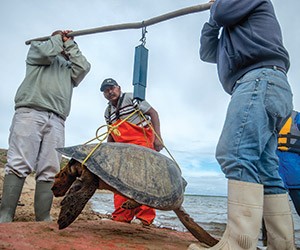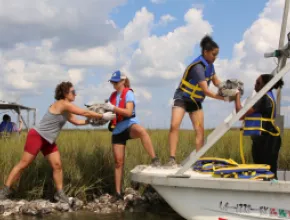Maybe you’ve built the bike and donated it to a needy child during a meeting program, or pounded some nails to help construct a house for a cash-strapped family before or after a convention.
Sure, it felt good —as it should —to give back to the community as part of your event, but besides the warming of your heart, what else did it accomplish?
To corporate branding specialists and team-building experts, giving back via CSR, or corporate social responsibility, programs not only invigorates attendees, it is also an increasingly crucial part of organizational brand strategy and a driver of bottom-line profits.
“Meeting planners need to embrace CSR because marketing and foundation work used to be a separate area from the for-profit area of companies, but that has changed,” says Simon Mainwaring, founder of social branding firm We First (www.wefirstbranding.com), which is also the title of his book on the subject. “The CSR component is a key part that a corporation needs to tell their customers in order to be meaningful in their lives.
“The consistent message global consumers are giving is that if you want us to vote for you with our dollars, we need you to be more socially responsible,” he continues. “A meeting planner doesn’t need to incorporate CSR in a traditional sense. It’s now a fundamental driver of business success.”
As an example of the emphasis some of the world’s largest corporations are placing on CSR, Mainwaring cites the following campaigns: Open Happiness, from Coca-Cola; Refresh Everything, from Pepsi; Better World, from Nike; Shared Planet, from Starbucks; and Smarter World, from IBM.
“All five of these brands and many more have reframed their messaging to make themselves more meaningful to their customers,” Mainwaring says, “so their customers will use their own social media to talk about their brand.”
Mainwaring points to major polling firms, such as Neilsen and Gallup, that track major increases in socially conscious social media engagement across a wide swath of demographics. Another leading indicator is from the world’s largest public relations firm, Edelman, which produces a “Trust Barometer” on its Good Purpose website (http://purpose.edelman.com), an annual global research project that tracks consumer attitudes about social purpose.
“You only need to look around you. There are almost too many companies talking about the good they’re doing; like talking about how green they are,” Mainwaring jokes.
Practical Applications
While the mega-marketing campaigns of multinational corporations may be impressive in budget, scope and impact, even planners for smaller associations, nonprofits or corporations can dive into the CSR pool.
John Chen, CEO of Seattle-based PLAYTIME Inc. (www.playtimeinc.com), which specializes in technology-oriented team-building and CSR programs, believes a good CSR program needs to have a couple of crucial attributes: They have to do everybody good, in that they should be inspiring to all of the people participating on the team as well as the eventual recipients; and they have to be authentic, which can be the most-challenging aspect of the program, as you don’t want it to seem “forced” when, say, an underprivileged child appears to accept a bike or other product that was made for them.
A big plus, according to Chen, is to incorporate into the CSR program a product or service the organization offers.
As an example, Chen cited a recent team-building CSR program his company organized for some 2,000 attendees in Phoenix.
Working with a pharmaceutical company, PLAYTIME set up a program in which approximately 20,000 cans of food were arranged in grids to create a mosaic of the company’s logo. Each team of 10 to 15 people had a box in one of the grids and were tasked with laying out the cans on a map for their respective portion of the grid.
To facilitate the program, PLAYTIME had all of the cans shipped to where the event was taking place, Chase Field, home of the Arizona Diamondbacks. The mosaic-building program was one of seven stations that comprised an Amazing Race-style competition in which teams also undertook challenges in a batting cage and by assembling a giant, 54-piece baseball-related puzzle.
The end result of the CSR component was that 18,000 lbs. of food was donated to a Phoenix food bank.
“Every company has its unique aspects,” he says, “and when they take the skills they have and decide to donate them, that can have huge impact, because that brings meaning to your work. It’s easy to forget that when you’re in your cubicle pushing paper around, that your work can have an impact on the world.”







